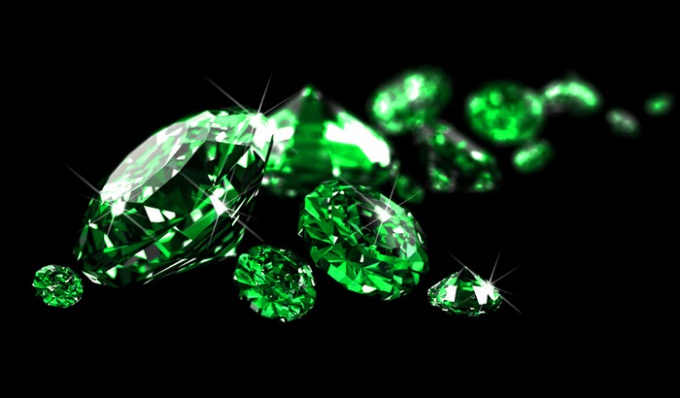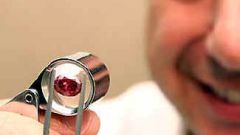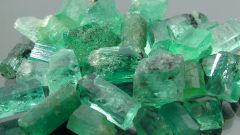You will need
- emerald,
- magnifier,
- a glass of water
Instruction
1
If the emerald in the socket, to distinguish artificial from natural is very difficult. First of all, you need to focus on price. Real stone is much more expensive, and large emeralds of fabulous road. So, after a ring with a large stone at a reasonable price, beware: this is definitely a fake. Too sparkly large stones, most likely are common with jewelry made of glass.
2
Than emerald more transparent, the higher its value. The muddy look is not so attractive, but chances are that the stones are real, a lot more. Emeralds come in both light and dark. Among bright, clean and clear come across quite often, so if you buy a necklace or earrings in a respectable shop, the danger of running into fake a lot less. Dark emeralds are much more expensive and can be purchased only in the jewelry boutiques of high class.
3
To determine the authenticity of the stone without a rim is not that difficult. Take a good magnifying glass and look at the emerald angle. In this view you can see the line of growth of stone. From synthetic emerald, grown in the laboratory, these lines are absolutely parallel. This stone line is also parallel to, but not so orderly.
4
When choosing a stone for a ring or a pendant, you should pay attention to the color, not the purity of an emerald. Experts say that the best dark emeralds seem to have published pieces green soft velvet. It is better to choose a stone of dark color, even if it has a blue or yellow tinge and inclusions inside. The presence of defects in the form of cracks, opaque spots and uneven coloring is a guarantee of the authenticity of the stone. Natural stones have inclusions come in the form of crystals of pyrite and microlamella mica. Very bright stones can actually prove to be a beryl, green tourmalines or peridots.
5
Although more prized bright emeralds, that's when their choice is easy to run on a synthetic analog. These stones have a very strong color, often with a blue tint, however, these can be and emeralds from Colombia. Synthetic stones are grown using the hydrothermal method are gaseous or liquid inclusions.In fact it is neuvaine beryls, which are covered with a layer of synthetic emerald. This pale green stone with lots of cracks, which, when immersed in water, become like a bright green outline. Obvious fake, if you drop it in a glass of water and viewed from above, will be reddish.
Note
When choosing between the imperfect natural emerald and brilliant artificial give preference to the first. Real is much more prestigious and almost eternal, in contrast to imitation.
Useful advice
Not to be deceived when purchasing jewelry, it is always safer to purchase a stone separately and order the product checked by the master. If you choose the ring or earrings, buy them in good stores, and check the certificate of conformity.




